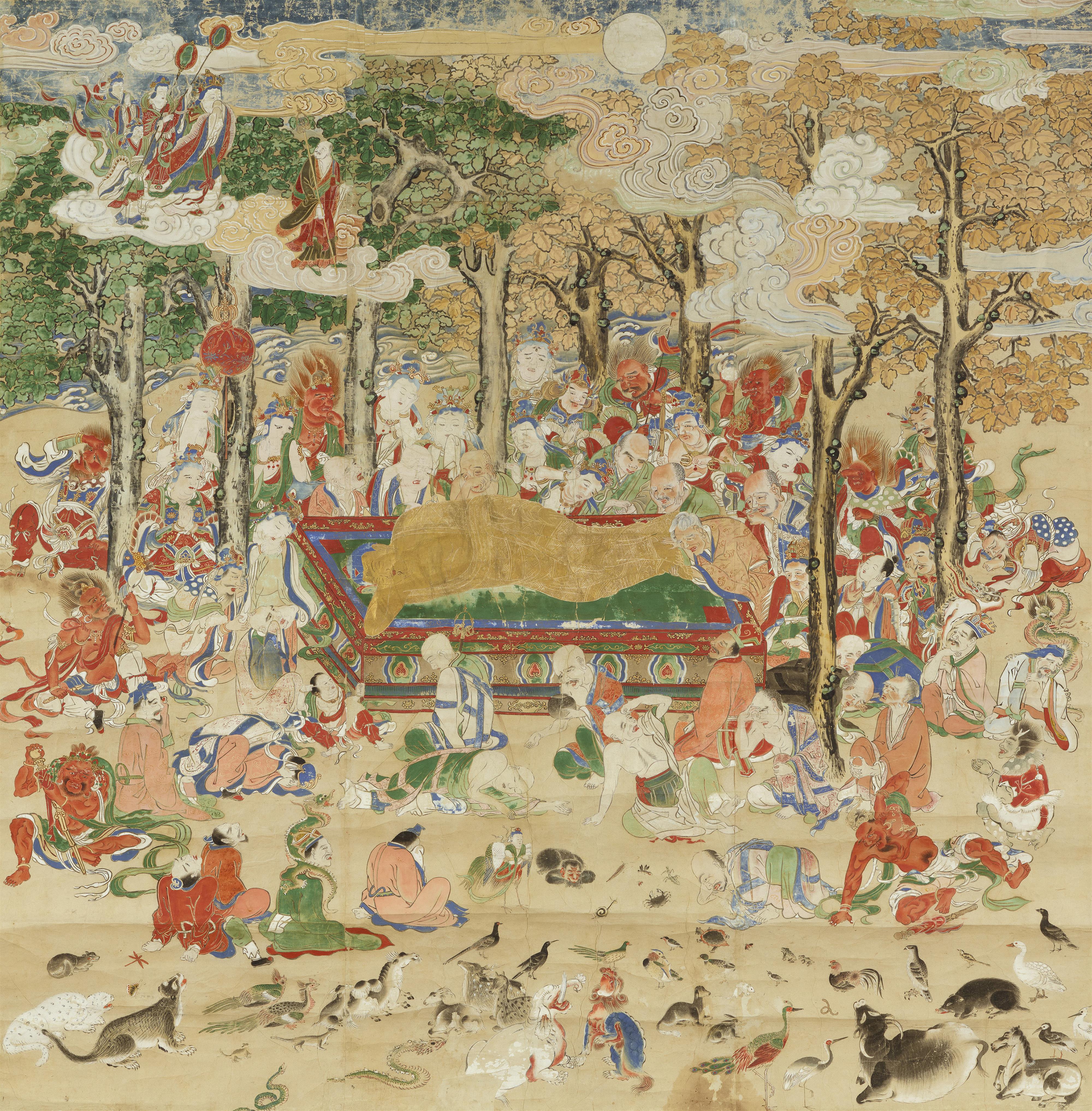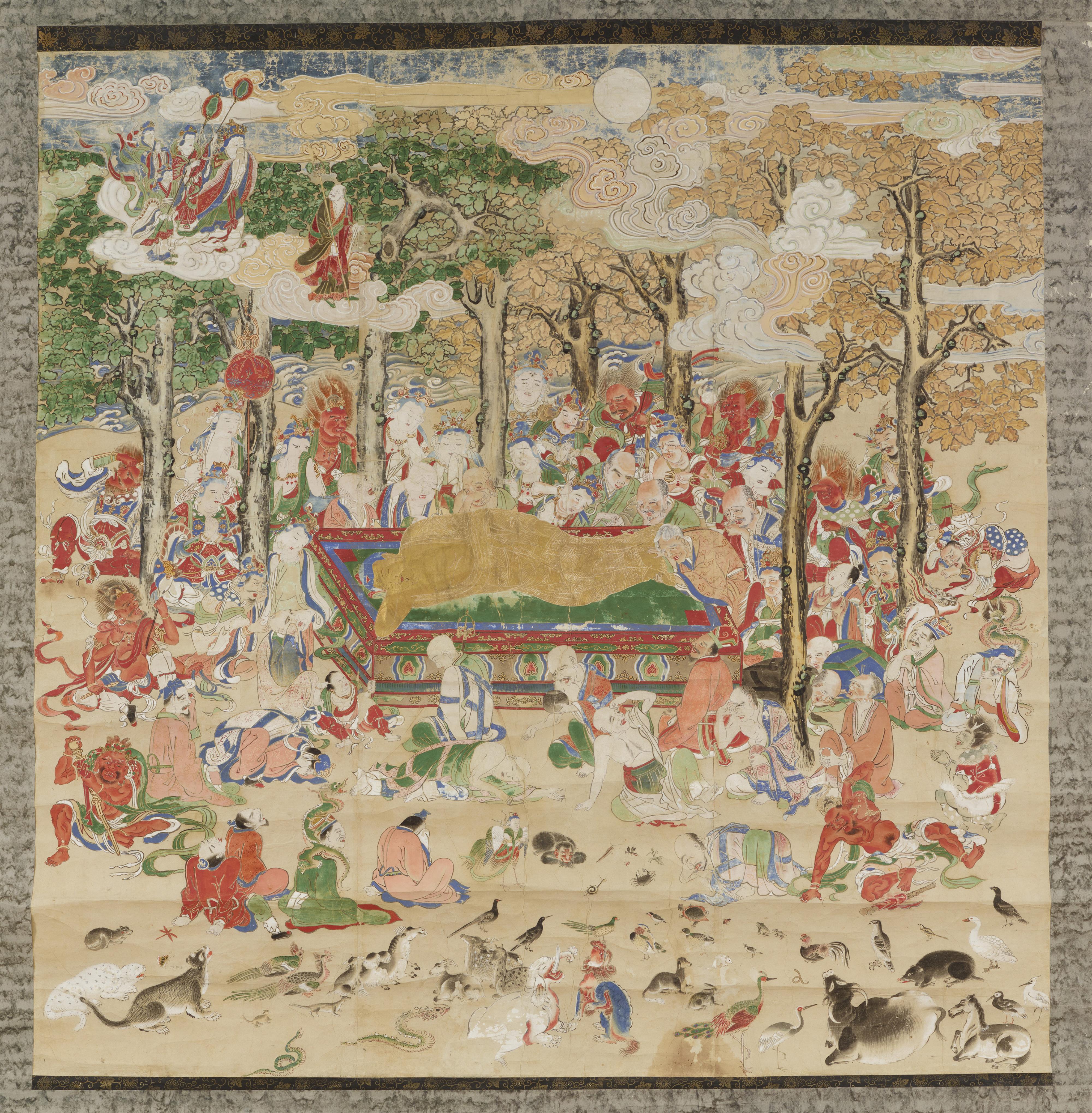Anonymous painter
Anonymous painter. Edo period, 19th century
A coloured woodblock print, mounted as a hanging scroll, depicting the death of Buddha and his entering Nirvana (nehan). At the centre the historical Buddha Shakyamuni, painted in gold, lies on a dais, the head resting on his right arm. He is surrounded by mourning, weeping and grieving luohan, deities, demons and heavenly guardians. Only the enlightened Bodhisattvas remain serene. Eight sala-trees encircle the death bed and clouds move through their leafy crowns topped by a full moon. From the left, Maya, the mother of Shakyamuni, descends on a cloud lead by the monk Aniruddha. In the lower portion of the painting animals express their grief in different ways, the large animals are arranged at the centre, while the smaller and smallest animals are depicted in the corners. Ink, colours and gold on paper.
156 x 153.7 cm
Pictures of the death of the historical Buddha and his entering nirvana belong to the standard repertoire of Buddhist pictorial art. Each year on the 15th day of the second month monumental nehan-zu are hung in temples open to the worshippers and accompanied by ceremonies in commemoration the death of the historical Buddha.
The composition of the present painting follows the design laid down in the Kamakura period. It follows the story of Buddha’s death as told in the Nirvana Sutra and other scriptures. In the Edo period nehan-zu were created in great numbers and differing sizes — also as woodblock prints — for temples and monastery of all Buddhist sects as well as for private households.




